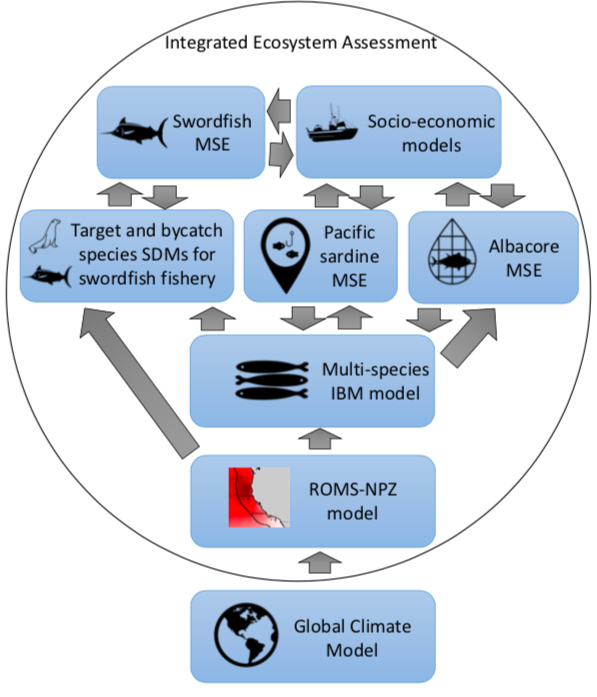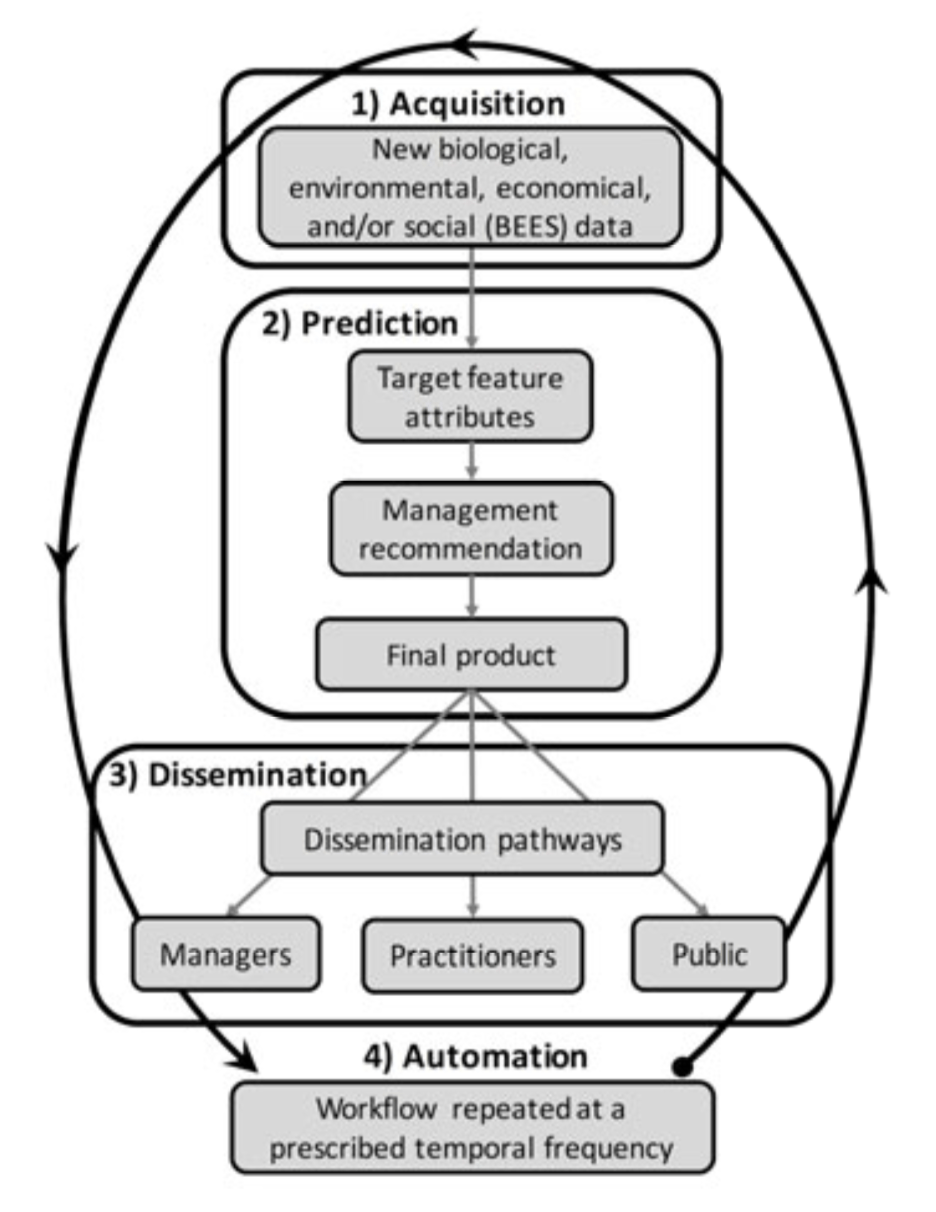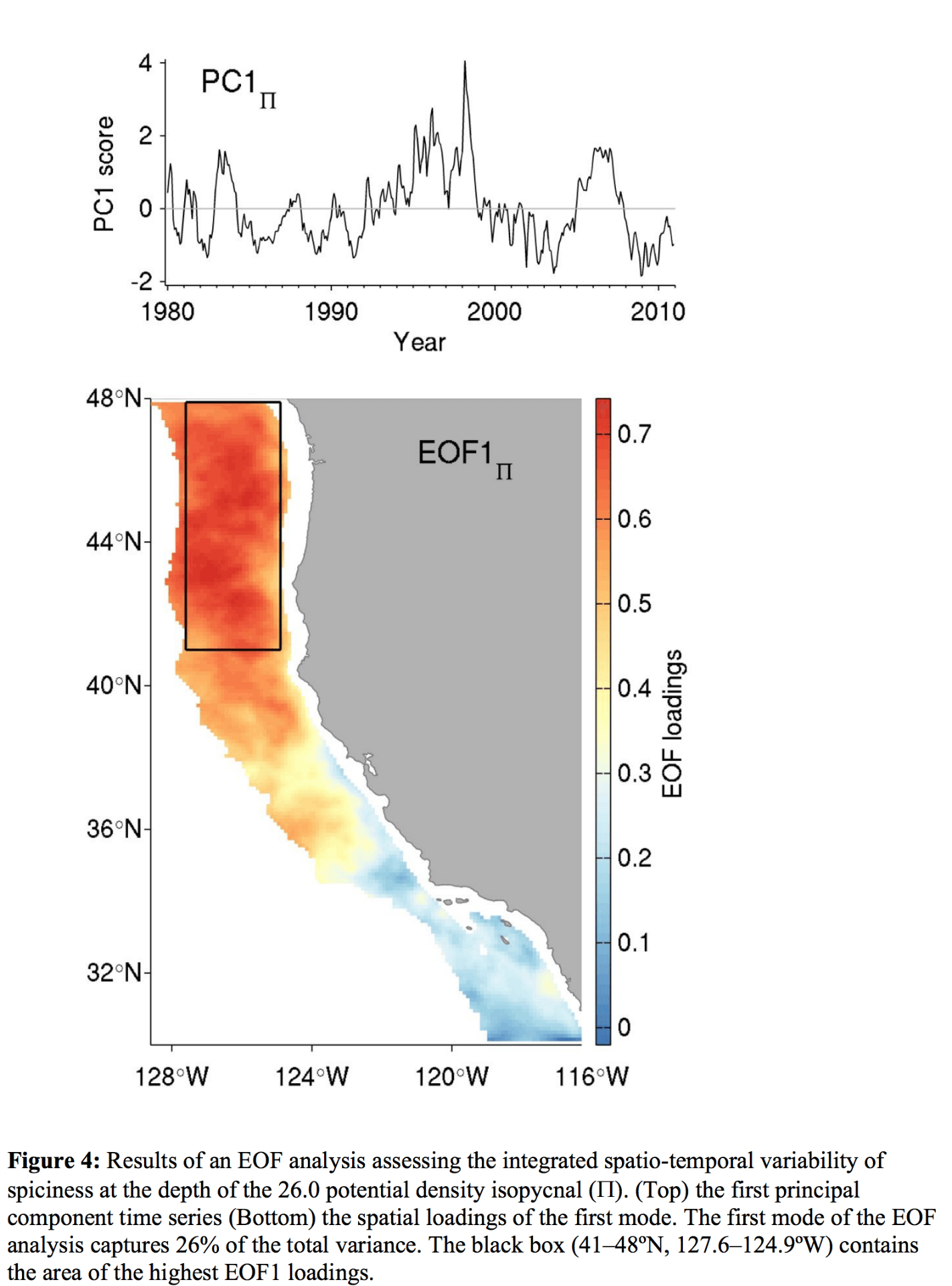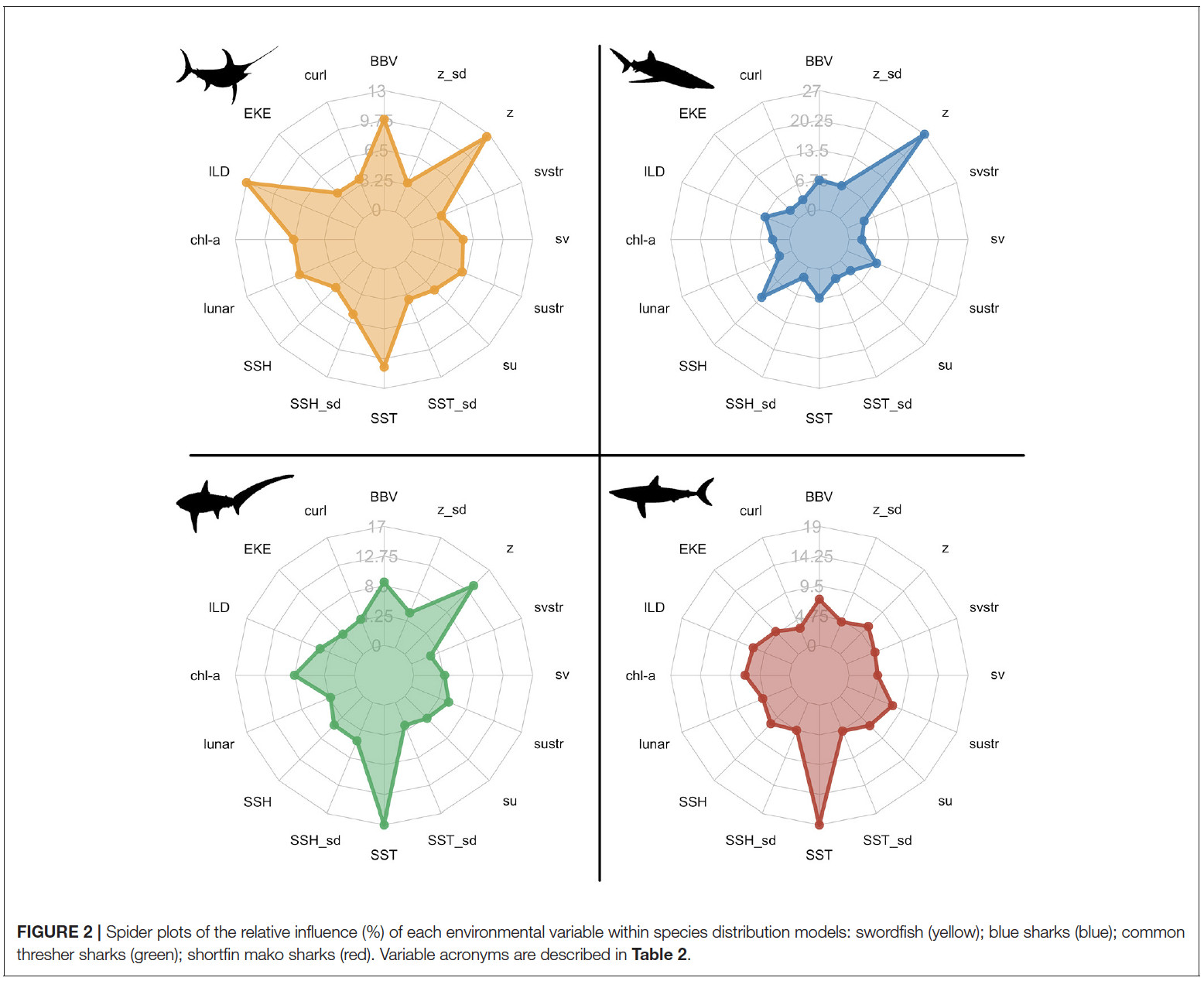With the Bakun upwelling index almost 30 years old, a new publication by Mike Jacox explores two new indices derived from modeled vertical velocity: CUTI (coastal upwelling and transport index) and BEUTI (biologically effective upwelling and transport index). Mike has also provided a history of the upwelling indices focusing on where the indices agree and diverge. The publication is available in early view at JGR. Continue reading
Author Archives: elhazen
Welcome Dr. Stefan Koenigstein to Monterey!
We are excited to have Stefan join the team, moving from his position in Bremen to our cooperative institute at UC Santa Cruz. During his PhD, Stefan used interdisciplinary methods to investigate the impacts of ongoing ocean warming and acidification on the marine ecosystem and human user groups in the sub-arctic Barents Sea. He developed and applied integrative ecological models that incorporate experimental and observational data on biological processes as well as the input of local stakeholder groups. The models allow to assess future shifts in marine fish stocks, food web-mediated impacts on marine mammals and seabirds, and changes in ecosystem functioning. They are used to develop feasible and fair strategies for ecosystem-based governance of climate change impacts in the marine realm. We are excited to have Stefan join the team and help develop similar models for the California Current!
New publication titled “Practical considerations for operationalizing dynamic management tools” by Heather Welch
When building an operational tool, building the ecological models is only part of the equation. Equally important is ensuring that we have operational tools and regular predictions for use in management. Welch et al. 2018 explore the operational-side of the EcoCast tool, including potential pitfalls and solutions towards decision making. The paper came out in early view in the Journal of Applied Ecology and there is a discussion on the steps involved in creating fisheries nowcasts in the Conversation.
Figure 1. The four stages of operationalizing a dynamic management tool (hollow fill) and internal components (grey fill). The framework is relevant to operationalizing tools at one point in time and does not encompass tool updates as new data become available.
New publication in CJFAS by Isaac Schroeder on “Source water variability as a driver of rockfish recruitment in the California Current Ecosystem”
Elucidating connections between ocean climate variability and change, and recruitment of juvenile fishes to adult populations, is critical for understanding variability in stock-recruit dynamics. Recruitment to adult rockfish populations in the California Current Ecosystem (CCE) is highly variable, leading to short and long-term changes in abundance, productivity, forage availability and potential fisheries yield. We used regional ocean model output, oceanographic data, and a 34-year time series of pelagic juvenile rockfish, to investigate the interaction between changes in CCE source waters as reflected by physical water mass properties and recruitment variability. Specifically, variability of spiciness on upper water isopycnals explains a substantial fraction of the variation in pelagic juvenile rockfish abundance. High rockfish abundances correspond to cooler, fresher waters with higher dissolved oxygen (i.e., minty) conditions, indicative of Pacific Subarctic Water. By contrast, years of low rockfish abundance are associated with warmer, more saline, and more oxygen deficient (i.e., spicy) conditions, reflecting waters of subtropical or equatorial origin. Transport and source waters in the CCE are key factors determining density-independent processes and subsequent recruitment to adult populations.
Welcome Dr. Megan Cimino to Monterey!
We are excited to have Megan join the team, moving from her position in UC San Diego to our cooperative institute at UC Santa Cruz. Her Ph.D. research investigated the effects of climate change on Pygoscelid penguins in the Southern Ocean by using underwater robots, animal-borne tags, habitat modeling approaches, IPCC global climate models, and multi-decadal satellite, weather and penguins observations. This research addressed multidisciplinary questions (climate change effects, changes in demography, predator-prey dynamics, interspecific competition) across multiple trophic levels and scales. As a post-doc at the Scripps Institution of Oceanography in the Coastal Observing Research and Development Center, she used autonomous robots in novel ways to study jellyfish distribution in a marine lake, a snapper spawning aggregation, and detect tagged and vocalizing animals. She is excited to join NOAA ERD where her work will continue to understand the bio-physical factors that drive species distributions and movements on multiple spatiotemporal scales with the ultimate goal of aiding in conservation and management.
Project website goes live for the Future Seas project!
Future Seas is a project exploring potential impacts of climate change on the swordfish, albacore, and Pacific sardine fisheries in the California Current System. A suite of dynamical, statistical, and conceptual models is being applied to explore future scenarios in an “end-to-end” framework spanning physical changes to socio-economic consequences, and to evaluate uncertainty associated with individual elements of the modeling framework.

New publication in Proceedings in the Royal Society B titled “Mesoscale activity facilitates energy gain in a top predator.”
How animal movement decisions interact with the distribution of resources to shape individual performance is a key question in ecology. However, links between spatial and behavioural ecology and fitness consequences are poorly understood because the outcomes of individual resource selection decisions, such as energy intake, are rarely measured. Download the PDF below to read more!
 B. Abrahms, K.L. Scales, E.L. Hazen, S.J. Bograd, R.S. Schick, P.W. Robinson, D.P. Costa. 2018. Mesoscale activity facilitates energy gain in a top predator. Proceedings of the Royal Society B, 285: 20181101. DOI: 10.1098/rspb.2018.1101. PDF
B. Abrahms, K.L. Scales, E.L. Hazen, S.J. Bograd, R.S. Schick, P.W. Robinson, D.P. Costa. 2018. Mesoscale activity facilitates energy gain in a top predator. Proceedings of the Royal Society B, 285: 20181101. DOI: 10.1098/rspb.2018.1101. PDF
New publication on “Integrating Dynamic Subsurface Habitat Metrics Into Species Distribution Models”
Steph Brodie published a manuscript in Frontiers in Marine Science on how we can improve habitat models by including subsurface variables.
Species distribution models (SDMs) have become key tools for describing and predicting species habitats. In the marine domain, environmental data used in modeling species distributions are often remotely sensed, and as such have limited capacity for interpreting the vertical structure of the water column, or are sampled in situ, offering minimal spatial and temporal coverage. Advances in ocean models have improved our capacity to explore subsurface ocean features, yet there has been limited integration of such features in SDMs.
Read more below:
S. Brodie, M.G. Jacox, S.J. Bograd, H. Welch, H. Dewar, K.L. Scales, S.M. Maxwell, D.K. Briscoe, C.A. Edwards, L.B. Crowder, R.L. Lewison, and E.L. Hazen. 2018. Integrating dynamic subsurface habitat metrics into species distribution models. Frontiers in Marine Science. DOI: 10.3389/fmars.2018.00219. PDF
New publication on dynamic ocean management for the California swordfish fishery in Science Advances
New computer-generated daily maps will help fishermen locate the most productive fishing spots in near real time while warning them where they face the greatest risk of entangling sea turtles, marine mammals, and other protected species. Scientists developed the maps, the products of a system called EcoCast, to help reduce accidental catches of protected species in fishing nets.
Funded primarily by NASA with support from NOAA, California Sea Grant, and Stanford University, Ecocast was developed by NOAA Fisheries scientists and academic partners with input from fishermen and managers.
E.L. Hazen, K.L. Scales, S.M. Maxwell, D. Briscoe, H. Welch, S.J. Bograd, H. Bailey, S.R. Benson, T. Eguchi, H. Dewar, S. Kohin, D.P. Costa, L.B. Crowder, R.L. Lewison. 2018. A dynamic ocean management tool to reduce bycatch and support sustainable fisheries. Science Advances, 4: eaar3001. PDF
Fisheries bycatch risk to marine megafauna is intensified in Lagrangian coherent structures.
New research is out in PNAS on how dynamic features may influence bycatch risk of large predators led by Kylie Scales!
Incidental catch of nontarget species (bycatch) is a major barrier to ecological and economic sustainability in marine capture fisheries. Key to mitigating bycatch is an understanding of the habitat requirements of target and nontarget species and the influence of heterogeneity and variability in the dynamic marine environment.
K.L. Scales, E.L. Hazen, M. Jacox, F. Castruccio, S. Maxwell, R. Lewison, S. Bograd. 2018. Fisheries bycatch risk to marine megafauna is intensified in Lagrangian coherent structures Proceedings of the National Academy of Sciences. DOI: 10.1073/pnas.1801270115. PDF



